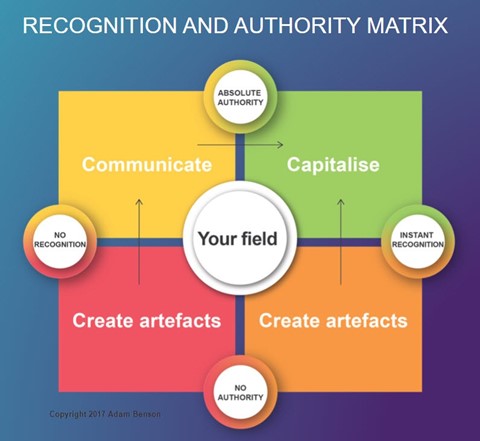In my last article, I referred to choosing one of the seven possible thought leadership strategies to frame your content-led marketing efforts. I also promised to explain each of these strategies in more detail, and I will in articles coming soon.
However, first I wanted to share my methodology for building thought leadership for a business-to-business (B2B) organisation that sells technical or complex, high-value solutions.
I created this framework several years ago in response to the growing requests by clients to support their content-led thought leadership marketing.
Aside from not being clear on which thought leadership strategy was appropriate for particular types of organisations, there was often no content production framework to follow.
What I found during many client conversations was a lot of competing focus areas and ideas for content, which often seemed disconnected and inconsistent.
The fact is, if we’re embarking on a thought leadership-led marketing program, then we need to know a few things about our starting point in the market. Knowing where an organisation fits into the competitive (direct and indirect) landscape is critical.
In my experience, you don’t need to know how your ideal addressable market perceives you with 100 per cent accuracy, (business-to-consumer (B2C) organisations are a different matter).
However, you do need to ask enough questions of your customers, prospects, sales teams, reseller channel partners, and suppliers to be confident that you know where you sit in their collective minds, based on their lived experience.
After all, if you don’t know where you are right now, it is difficult to come up with a plan to improve your position. You might move further away from the thought leadership position you want to occupy.
The framework I came up with to solve this challenge is the Recognition and Authority Matrix. It’s a two-by-two matrix. (I’m a fan of two-by-two matrixes. I think they create exactly the right amount of creative tension to test the most complex of problems. Also, I can draw them on a whiteboard in a workshop really easily.)
This is the model:

The Recognition and Authority Matrix.
The Recognition and Authority Matrix: created to help clients work out their starting position in their thought leadership program
Using this matrix, we can attempt to map an organisation’s thought leadership position.
On the recognition axis, an organisation will rest somewhere between being instantly recognised or suffering from no recognition. Keep in mind, this is about recognition with the audiences that matter to you. If you sell a tool exclusively to data scientists working in critical infrastructure organisations, then it’s their opinion that matters most (probably). You don’t need general brand awareness with small business owners.
On the authority axis, a company will rest somewhere between the claim of absolute authority in the minds of their ideal addressable market and holding no authority.
So, we end up with four quadrants as a result:
- Bottom left – no authority/no recognition (a lot of start ups).
- Bottom right – no authority/instant recognition (well-known firms moving into new territory where their credentials are unclear).
- Top left – no recognition/absolute authority (companies that can hand-on-heart lay claim to being drivers, innovators, and leaders in their field of expertise, but no-one has ever heard of them (for the things they need to be known about).
- Top right – the position every organisation wants. Absolute authority and instant recognition. Easy to describe and hard to attain (and even harder to maintain).
Once an organisation has plotted its position on the Recognition and Authority Matrix, the process to commence building thought leadership becomes much clearer.
Changing quadrants
Organisations finding themselves in either of the two quadrants below the authority axis need to build evidence. We do this by creating artefacts which demonstrate authority; more on this in a subsequent article.
Organisations finding themselves in the top left quadrant (lots of authority but limited recognition) won’t need to create as many artefacts. They have them, they just need to be communicated more effectively. We will often hear our clients talk about the success they’re having with customers or their superior technical credentials, but these facts remain as hidden gems.
Those organisations in the lots-of-authority/instant-recognition quadrant have one job, and one job only: produce quality content and communicate it at a volume and velocity that overwhelms all other contenders. Companies in this quadrant are on a countdown to create as much daylight between themselves and competitors before they have to commence a rear-guard action. The focus is to capture as much market share as possible, build defensible moats, and cement their position as a leader.
My next articles will begin to dig into each of the seven thought leadership strategies, and then we’re going to return to this model to discuss artefacts in more detail.
It’s important to understand that there are literally thousands of artefacts that can build authority, but they’re not all suitable for every kind of thought leadership strategy.
Adam Benson,
CEO
The Recognition Group
This article is completely generated by the author. No artificial intelligence tools were used to create or edit this copy.
Other articles in the thought leader series include:
-
-
- Why it’s hard to make your B2B company a thought leader (and what to do about it)
- The two myths about thought leadership that challenger brands waste time worrying about.
- Seven thought leadership strategies B2B marketers need to know
- What is people-led thought leadership strategy?
- Thought leadership marketing for companies that sell a process
-
This article originally published on LinkedIn: HERE.












